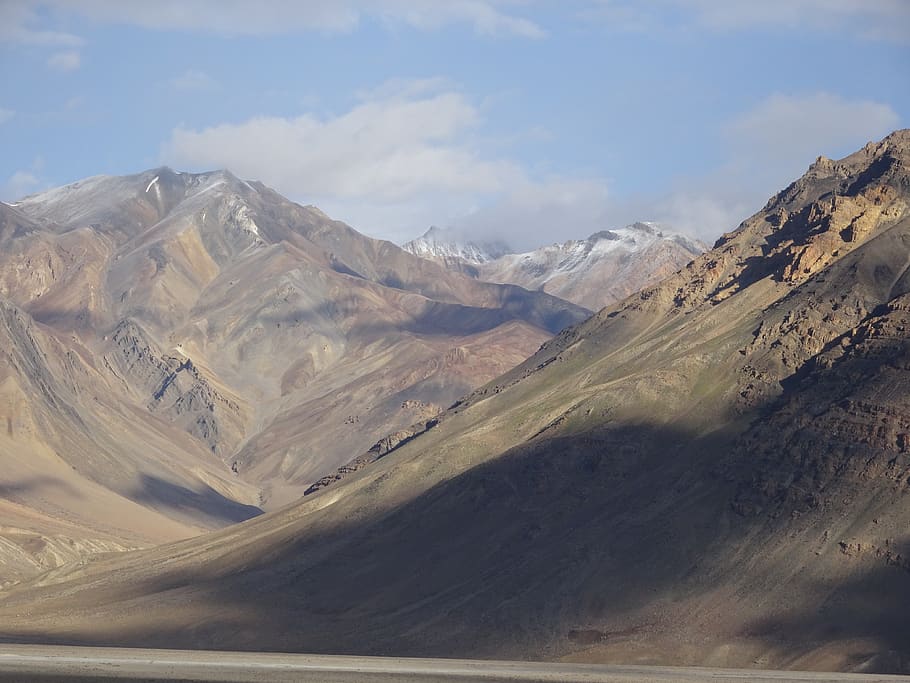
Introduction
Nestled in the heart of the Himalayas, Spiti Valley is a land of stark and breathtaking beauty. Tucked away in the northernmost reaches of the Indian state of Himachal Pradesh, Spiti has long been a well-kept secret among intrepid travelers. The rugged terrain, serene monasteries, and pristine landscapes make Spiti a paradise for nature enthusiasts, adventure seekers, and anyone looking to escape the chaos of city life.
In this article, we’ll embark on a virtual journey through the enchanting Spiti Valley tour, exploring its captivating landscapes, ancient monasteries, and unique culture. So, fasten your seatbelts, and let’s begin this unforgettable adventure.
The Road Less Traveled: Getting to Spiti Valley
The journey to Spiti Valley is not for the faint of heart. The region is cut off from the rest of the world for a significant part of the year due to heavy snowfall, making the road to Spiti one of the most challenging and thrilling aspects of the trip. The two primary routes to Spiti are from Manali and Shimla, both offering their own set of adventures.
The Manali route, known as the Manali-Leh Highway, is famous for its treacherous passes and jaw-dropping vistas. Rohtang Pass, the gateway to Spiti from Manali, is notorious for its unpredictable weather and narrow, winding roads. But once you cross into the Spiti Valley, you are greeted by a surreal landscape of high mountains, arid deserts, and emerald green rivers.
On the other hand, the Shimla route, though less daunting in terms of altitude and road conditions, still offers a spectacular journey through Kinnaur Valley. You’ll pass through quaint villages, terraced fields, and apple orchards, with the Sutlej River accompanying you for a significant part of the journey.
Monastic Marvels: Exploring Spiti’s Ancient Gompas
Spiti Valley is often referred to as “The Land of Monasteries,” and for a good reason. Its barren landscapes are punctuated by ancient Buddhist monasteries, or gompas, that seem to cling to the cliffs like eagle’s nests. The most renowned of these monasteries include Key Monastery, Dhankar Monastery, Tabo Monastery, and Kye Monastery.
Key Monastery is a highlight of any Spiti Valley tour. Perched at an altitude of 4,166 meters (13,668 feet) above sea level, it is the largest monastery in Spiti and offers breathtaking views of the surrounding mountains. The monastery houses a remarkable collection of ancient Buddhist scriptures and art, making it a must-visit for culture enthusiasts.
Dhankar Monastery, often referred to as the “Fort on a Cliff,” is a dramatic sight. Built on a high spur overlooking the confluence of the Spiti and Pin Rivers, this ancient monastery is not just a spiritual center but also an architectural marvel. The views from here are nothing short of surreal.
Tabo Monastery is often called the “Ajanta of the Himalayas” due to its remarkable frescoes and sculptures that date back to a thousand years. It is a UNESCO World Heritage Site and one of the oldest continuously operating Buddhist monasteries in India.
Kye Monastery, situated close to Kaza, is another gem. It’s a maze-like structure with small rooms, narrow corridors, and a collection of ancient murals and scriptures. The annual Chaam dance festival, held here, is a colorful extravaganza that draws both pilgrims and tourists.
A Date with Nature: The Stunning Landscapes of Spiti
While the monasteries are a significant draw, Spiti’s real beauty lies in its raw, unspoiled landscapes. The valley is a treasure trove of natural wonders, including high-altitude deserts, pristine lakes, and towering peaks.
Chandratal Lake, often referred to as the “Moon Lake,” is one of Spiti’s crown jewels. Situated at an altitude of 4,300 meters (14,100 feet), this crescent-shaped lake is surrounded by high mountains and offers a surreal reflection of the night sky. Camping here under a canopy of stars is an experience that stays etched in memory.
Pin Valley National Park, a paradise for wildlife enthusiasts, is home to the elusive snow leopard, ibex, and several bird species. The park is a haven for trekkers and nature lovers, with its lush green meadows, pristine rivers, and snow-capped peaks.
Kunzum Pass, at an altitude of 4,551 meters (14,931 feet), is a high mountain pass that connects the Spiti Valley with the Lahaul Valley. It offers panoramic views of the Bara-Sigri glacier, the second-longest glacier in the world outside the polar regions.
Local Flavors: Gastronomy and Culture
The culture of Spiti is deeply rooted in Tibetan Buddhism, and this influence is palpable in every aspect of life, including cuisine. Traditional Spitian cuisine is simple yet hearty, with momos (steamed dumplings), thukpa (noodle soup), and butter tea being staples. Don’t forget to savor the local barley-based alcohol, known as ‘Chhang,’ to warm up during the chilly evenings.
Conclusion
Spiti Valley is not just a destination; it’s an experience that transcends the ordinary. It’s a place where the soul finds solace in the lap of the Himalayas, where time slows down, and where nature’s grandeur takes center stage. The journey to Spiti Valley is arduous, but the rewards are immeasurable.
Whether you’re an adventurer seeking high-altitude thrills, a culture enthusiast looking to immerse yourself in ancient traditions, or a nature lover yearning for untouched beauty, Spiti Valley has something to offer. It’s a land of stark contrasts, where barren landscapes meet lush valleys, and ancient monasteries coexist with modern-day aspirations.
In the end, a journey to Spiti Valley is not just a trip; it’s a pilgrimage to the soul of the Himalayas. It’s a testament to the indomitable spirit of nature and the enduring wisdom of ancient cultures. So, pack your bags, leave your worries behind, and set forth on a journey that will leave you forever changed. Spiti is waiting, and it’s a journey you won’t want to miss.
